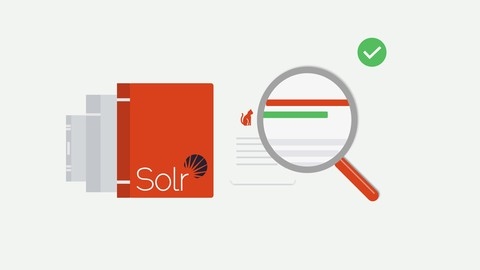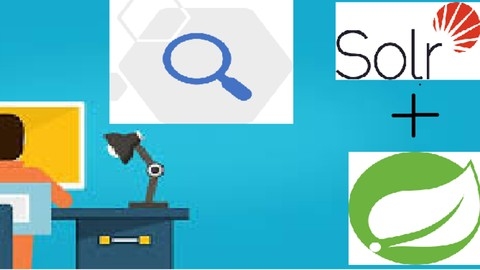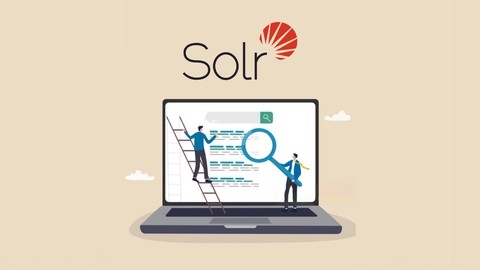Apache Solr is a powerful open-source search platform that helps you build fast, relevant, and scalable search experiences for your website or application.
Learning Solr can unlock a world of possibilities, allowing you to create robust search functionality and enhance user experience on any platform.
Finding the right Apache Solr course on Udemy can be a challenge, with a wide range of options available.
You’re looking for a course that’s comprehensive, engaging, and taught by experts, but also fits your learning style and goals.
We’ve reviewed countless Apache Solr courses on Udemy and based on our analysis, "Introduction to Apache Solr" by Lucian Oprea is the best course overall.
This comprehensive course covers the fundamentals of Solr and how to use it effectively.
You’ll learn how to install, configure, and query Solr, as well as how to index documents and work with advanced features like faceted search.
This is just the tip of the iceberg when it comes to learning Apache Solr on Udemy.
Keep reading for our full list of recommendations, tailored to specific learning styles and goals.
Introduction to Apache Solr
You’ll start by understanding the fundamentals of search engines and why Solr is a popular choice for building robust search applications.
Once you grasp the basics, you’ll dive into installing Solr and creating your first core.
The course walks you through indexing documents and performing basic searches, introducing you to the Solr administration console along the way.
To solidify your learning, you’ll design a Twitter search application from scratch.
This hands-on project will teach you key concepts like defining a schema, working with different field types, and handling nested documents.
You’ll also explore advanced topics like atomic updates, optimistic concurrency control, and reindexing strategies.
The course places a strong emphasis on text analysis, guiding you through the process and experimenting with the analysis form.
As you progress, you’ll learn how to construct effective queries using the standard query parser and implement faceted search for enhanced browsing experiences.
Learn Apache Solr with Big Data and Cloud Computing
You will start by exploring the fundamentals of big data and cloud computing, understanding how Solr fits into these domains.
The course dives deep into the core concepts of Solr, covering its architecture, installation, and configuration.
You will learn how to create cores, define schema files, and work with field types, analyzers, tokenizers, and filters.
Indexing and querying documents are covered in detail, including techniques like committing, optimizing, deleting, and updating document values.
Search is a central focus, with extensive coverage of features like filtering, field selection, debugging, range searching, function queries, faceting, highlighting, spell checking, auto-suggestions, and more.
Advanced topics like spatial search, result grouping, and query elevation components are also explored.
The course guides you through modifying the schema.xml file and configuring various aspects of Solr, such as logging and security.
You will also learn about clustering and replication in Solr, including the role of ZooKeeper in managing distributed environments.
Setting up a SolrCloud cluster is a key practical component, allowing you to experience the power of Solr in a cloud computing context.
Throughout the course, you will work with real-world examples and exercises to solidify your understanding of Solr’s capabilities.
Solr search & querying using java spring boot application
The course starts by covering the fundamentals of Apache Solr.
You’ll learn about Solr’s basics and how to query it effectively.
The introduction provides an overview of Solr and its capabilities.
Next, you’ll dive into the installation process, understanding the directory structure, and exploring the various options for starting and stopping the Solr server.
A hands-on exercise will reinforce your understanding of these options.
The course then delves into Solr’s AdminUI, a web-based interface for administering and monitoring your Solr instance.
You’ll learn how to navigate and utilize this powerful tool.
Understanding querying in Solr is a crucial aspect covered in the course.
You’ll learn how to construct queries, filter results, and retrieve relevant data from your Solr index.
To put your newfound knowledge into practice, you’ll develop a Spring Boot application that interacts with a Solr server.
This hands-on experience will teach you how to create a controller for your application and test it using Postman, a popular API testing tool.
Finally, the course covers advanced features that will enhance your Solr querying capabilities.
You’ll learn how to sort and paginate results, ensuring you can retrieve the most relevant information efficiently.
This practical knowledge will empower you to leverage Solr’s powerful search capabilities in your own projects.
The Complete Course of Apache Solr 2024
The course starts by introducing you to Apache Solr and search concepts.
You’ll learn why we use search engines and get an overview of Solr itself.
Next, you’ll dive into understanding basic concepts like Lucene, the technology behind Solr.
You’ll learn about inverted indexing, Solr’s storage schema, and how to install and navigate the Solr UI.
Creating Solr cores and working with query parameters are covered in-depth.
The course then moves into more advanced topics like directory management, indexing documents (including JSON), and indexing using Java code.
You’ll learn how to use the Java client API, search highlighting, and faceting.
Working with Solr through curl is also taught.
Advanced searching techniques are a major focus, including the standard query parser, boolean operators, fuzzy search, proximity search, range searches, and more.
You’ll learn about spell checking, escape characters, and parsing differences between Lucene and the standard query parser.
Subqueries are covered as well.
Preparing for production is key, so the course dives into scaling, availability challenges, cloud mode architecture, shards, replicas, and best practices.
Optimizing your index, configuring logging, security, and backups are all included.
Throughout, you’ll be learning directly through examples and hands-on activities rather than just slides.
The course flows naturally from core concepts to advanced techniques needed for real-world Solr applications.
Apache SolR and Tesseract - Beginners
You’ll start with an introduction to Apache Solr and Tesseract, learning about their features and use cases.
From there, you’ll dive into the installation process for Solr and explore its admin page functionality, including basic commands and operations.
One of the key focuses of the course is understanding Tesseract, an optical character recognition (OCR) engine.
You’ll learn about its internal architecture and how it works with Java code.
This knowledge will be invaluable when you move on to indexing and searching PDF files in Solr using Tesseract.
The course also covers the basics of Apache Tika, a toolkit for detecting and extracting metadata and structured text content from various documents.
You’ll learn how to index and search Word documents in English, as well as handle non-English languages within Solr.
Moving forward, you’ll install and configure Tesseract with Solr, enabling you to index and search images.
Additionally, you’ll learn how to work with CSV files in Apache Solr, including indexing and searching their contents.
Throughout the course, you’ll have opportunities to work with Java code, upload files and documents to Apache Solr, and perform content searches.
You’ll also learn about creating custom utilities and explore faceted search in Solr, a powerful feature for refining and filtering search results.





